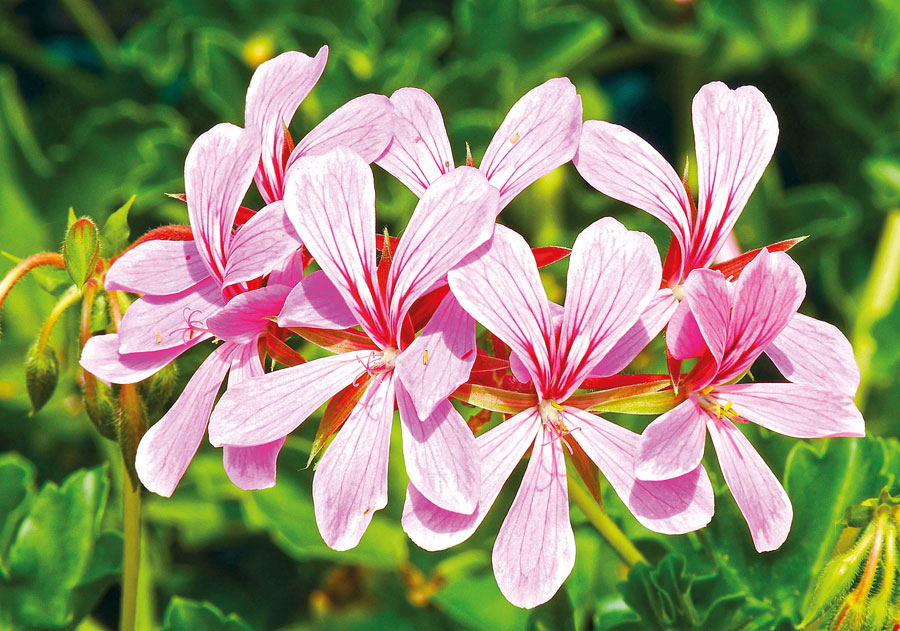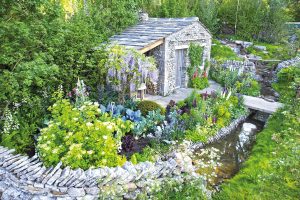June is the month when all that early planning and preparation starts to pay off, seeds sown earlier in the year should now be strong healthy plants ready for their final position in the garden. Whether flowers or vegetables they can be planted almost anywhere. If you have a small garden it is often impractical to set aside an area for vegetable growing so why not make little planting pockets amongst your borders, improving the soil with a little garden compost and fertiliser then planting in the prepared area salads, cabbages or direct sown veg such as carrots, radish, turnips, spring onions and the like. It’s a great way of having a little treat from your garden.
Staking perennials is most important and should be done when the plants are still developing, otherwise the stems become bent and distorted and never seem to recover properly. Placing the support material in place when the shoots are about 6 inches (15 cms) is the best and whilst you stake, take the opportunity to sprinkle a hand-full of general fertiliser around the plant if you didn’t feed earlier in the year. There are many types of frames, stakes and structures available but first you need to know how tall the plant you are supporting grows, plants like delphiniums will need a cane or stake, whilst more bushy perennials can be supported using short willow structures or strong wire frames. I use a range of materials depending on where in the garden the plants are growing. My partner makes small willow structures for natural effect and we also like rusty looking metal frames which seem to blend into the garden well. For the taller plants we paint bamboo canes with blackboard paint, this makes them almost disappear rather than seeing a bright yellow cane detracting from those majestic flowers. for shorter perennials such as geraniums I have used old wire hanging baskets, placed upside down the plants grow through and are completely invisible amongst the foliage. Even plants that were given the ‘Chelsea’ chop last month will need some staking although they are generally a little more robust.

■ Geranium
I’m always looking for ways to save money and to make my plants go further. With tomatoes there is a neat little trick that can give you more plants for your money and that is by taking cuttings. Most traditionally grown tomatoes produce side shoots and if left will take over the plant at the expense of producing flowers and fruit so the rule when growing in a greenhouse up canes is that these are removed. An old friend of mine, Joe Maiden told me how he took cuttings of tomatoes from the side shoots and I have done this many times with great success. The side shoots need to be left to grow to about 3 inches (7.5cm) then carefully removed by gently snapping them sideways or cutting with a sharp penknife. Prepare a small quantity of cutting compost, mixing in grit or pearlite to give it an open texture, about one pot-full of grit/pearlite to five pot-fulls of compost. fill a small pot firming lightly and then gently sliding the cutting down the side of the pot so one side of the side-shoot touches the pot the other the compost. firm lightly and water using a watering can fitted with a fine rose. Place the whole pot in a polythene bag, I use zip fastening sandwich bags which means I can open the top easily to check they are ok and on warm days let a little air in. Within a few weeks the cuttings will have rooted and can then be potted on into 2 litre pots, and treat them the same as your other tomato plants. Pinch the top growing point out when the plant has two trusses of flowers well formed and keep them fed and watered. It’s best to restrict them to two as the fruit has more chance of developing in the remaining season.
Most gardens with a lawn are by now generating a considerable amount of grass clippings, and simply dumping them on the compost heap can lead to a rather stagnant smelly heap. The fresh clippings piled on the heap without being mixed with some rough material will not rot down easily and invariably become a slimy brown mess. The rotting process needs air and mixing them into rough plant or hedge pruning’s helps them rot down better and makes great garden compost. I usually have a pile of hedge and plant pruning’s at the side of the compost heap and add a little each time I tip clippings.
Happy gardening
Martin
Next Month, Getting the best from your perennial border, mid season lawn-care and keep an eye on your roses.







